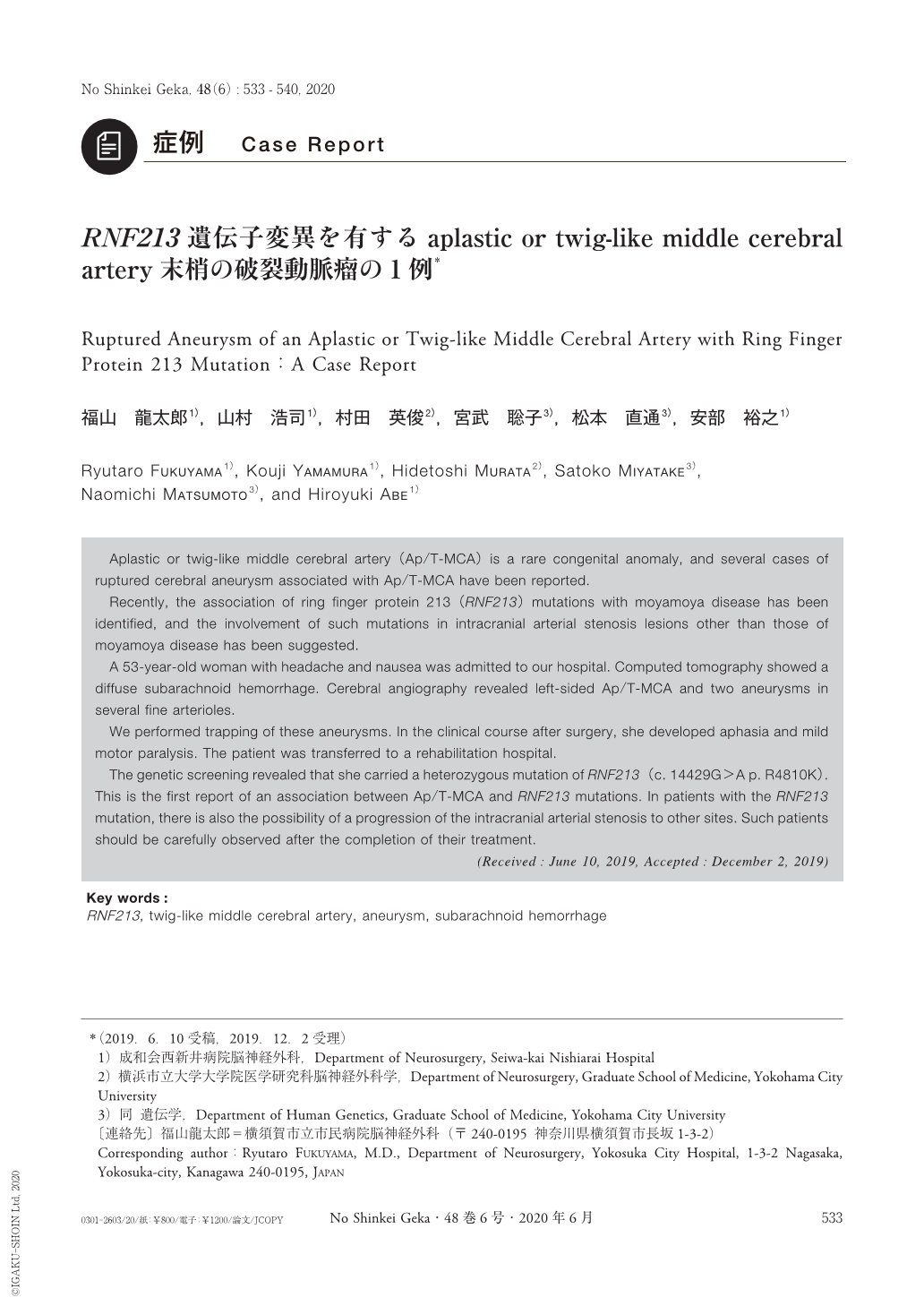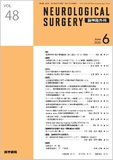Japanese
English
- 有料閲覧
- Abstract 文献概要
- 1ページ目 Look Inside
- 参考文献 Reference
Ⅰ.はじめに
Aplastic or twig-like middle cerebral artery(Ap/T-MCA)は中大脳動脈(middle cerebral artery:MCA)の先天奇形であり,Ap/T-MCAに関連した動脈瘤破裂によるくも膜下出血の報告は散見される2,11,14,16).一方で,ring finger protein 213(RNF213)遺伝子は近年,もやもや病の関連遺伝子とされているが,もやもや病以外の頭蓋内動脈狭窄病変との関連も示唆されている9).
今回,Ap/T-MCA末梢の破裂動脈瘤の患者でRNF213遺伝子変異を保因していた症例を経験したので報告する.
Aplastic or twig-like middle cerebral artery(Ap/T-MCA)is a rare congenital anomaly, and several cases of ruptured cerebral aneurysm associated with Ap/T-MCA have been reported.
Recently, the association of ring finger protein 213(RNF213)mutations with moyamoya disease has been identified, and the involvement of such mutations in intracranial arterial stenosis lesions other than those of moyamoya disease has been suggested.
A 53-year-old woman with headache and nausea was admitted to our hospital. Computed tomography showed a diffuse subarachnoid hemorrhage. Cerebral angiography revealed left-sided Ap/T-MCA and two aneurysms in several fine arterioles.
We performed trapping of these aneurysms. In the clinical course after surgery, she developed aphasia and mild motor paralysis. The patient was transferred to a rehabilitation hospital.
The genetic screening revealed that she carried a heterozygous mutation of RNF213(c. 14429G>A p. R4810K). This is the first report of an association between Ap/T-MCA and RNF213 mutations. In patients with the RNF213 mutation, there is also the possibility of a progression of the intracranial arterial stenosis to other sites. Such patients should be carefully observed after the completion of their treatment.

Copyright © 2020, Igaku-Shoin Ltd. All rights reserved.


